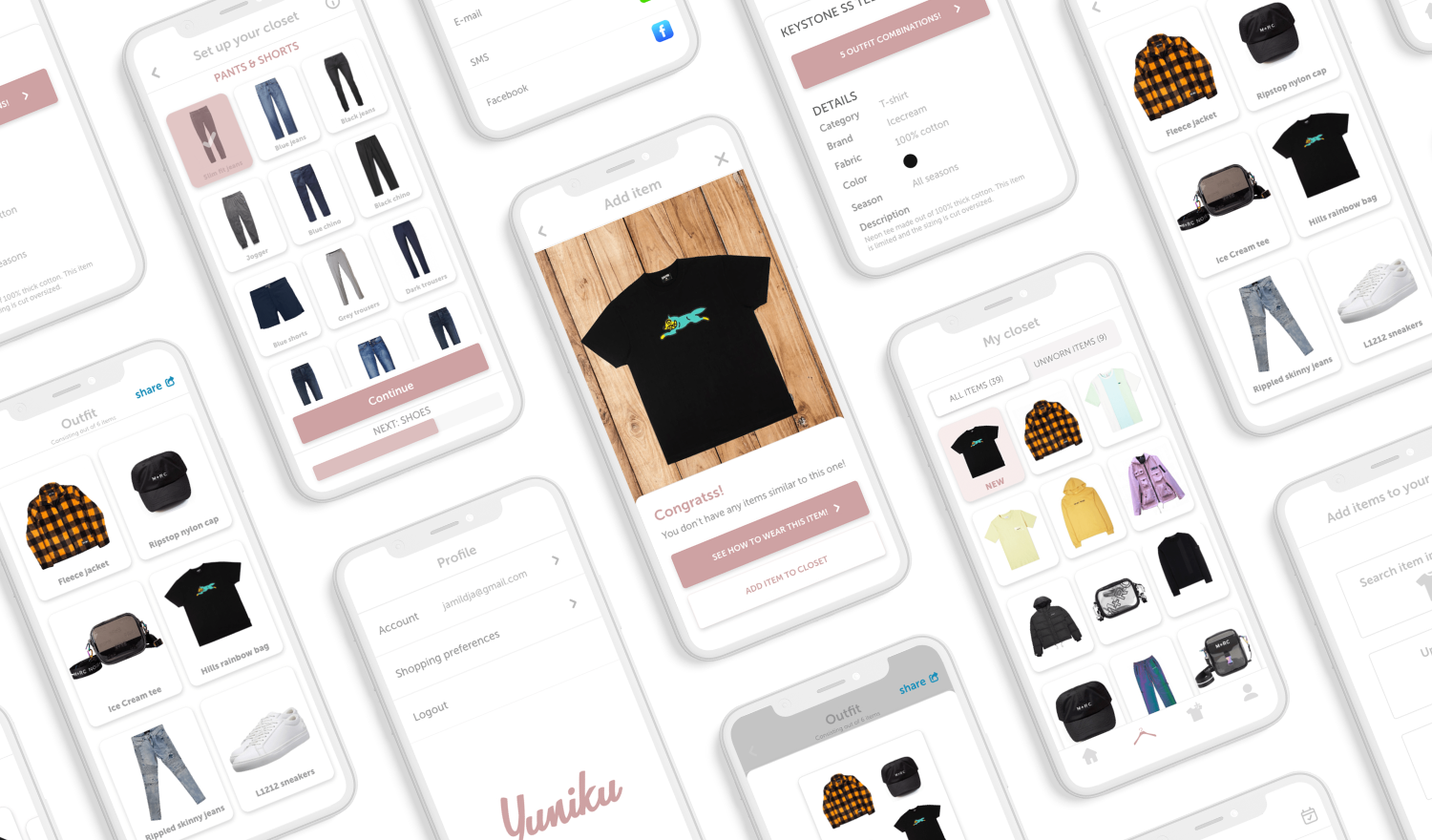
Yuniku, your digital wardrobe
All of your clothing digitalized in 1 place.
Yuniku will make it relevant again to wear items you haven’t worn in a while. It will generate new fresh outfits for you on a daily basis, you can easily add new items and share outfits with your friends. So decide what you are going to wear today!
Subject
Fast Fashion
School Project
Behavior Design
Role
- User Research
- Concepting
- Usability Testing
- Wireframing & Prototyping
- Visual Design
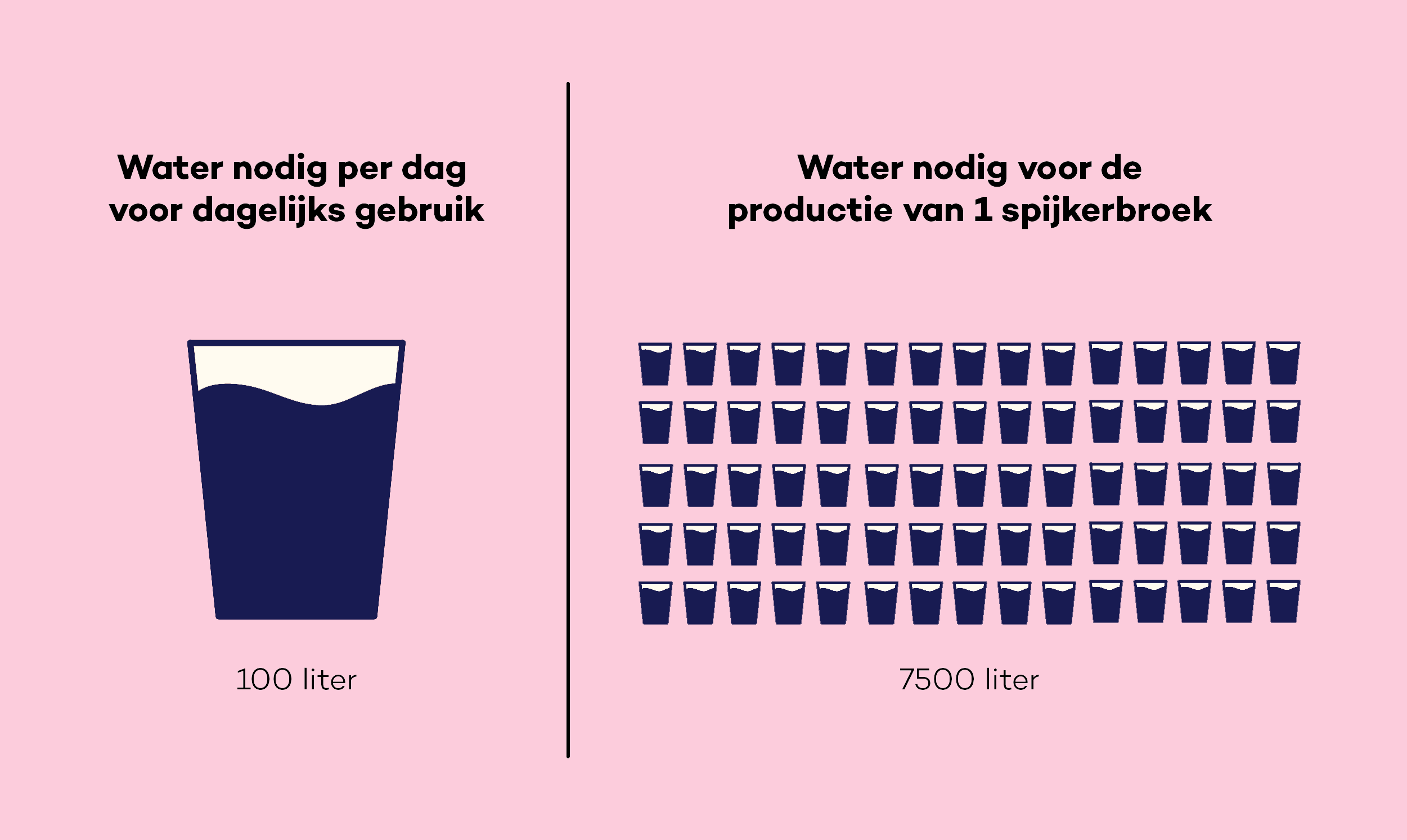
The Problem
Multinational clothing companies like H&M & Zara have new collections instore every week, with the latest copied trends for unrealistic low prices. These items are produced in low-wage countries in Southeast-Asia, where the working conditions of the workers are inhumane.
This phenomenon is known as ‘Fast Fashion’, the world 2nd biggest polluting industry.
The Ask
How can i make Fast Fashion buyers more aware of what they are buying online so that the amount of items they buy on a monthly basis decreases from 4+ items to 2 items a month?
Phases
🔍 1. Research (3 weeks) Developing insight into the users needs
✏️ 2. Design & Concept (3 weeks) Translating insights into concepts.
🧪 3. Testing & Finalising (3 weeks) Conducting usability tests and wrapping up
Research methods
🔎 Desk Research Research about the stakeholders: clothing stores, sustainable brands, the fabrics, fabric workers & the buyers.
🔬 Field Research Observation & interviews on sight in H&M with random buyers who were about to purchase more than 4 items.
👩🏻🎓 Interviews Interviews with 2 AMFI students about sustainable clothing and the impact it has and will have on the market.
👧🏽 Surveys with Fast Fashion Buyers Based on this I determined the target audience are people between 15-25 who buy 4+ items per month.
Target audience
People between 15-25 who buy 4+ items per month.
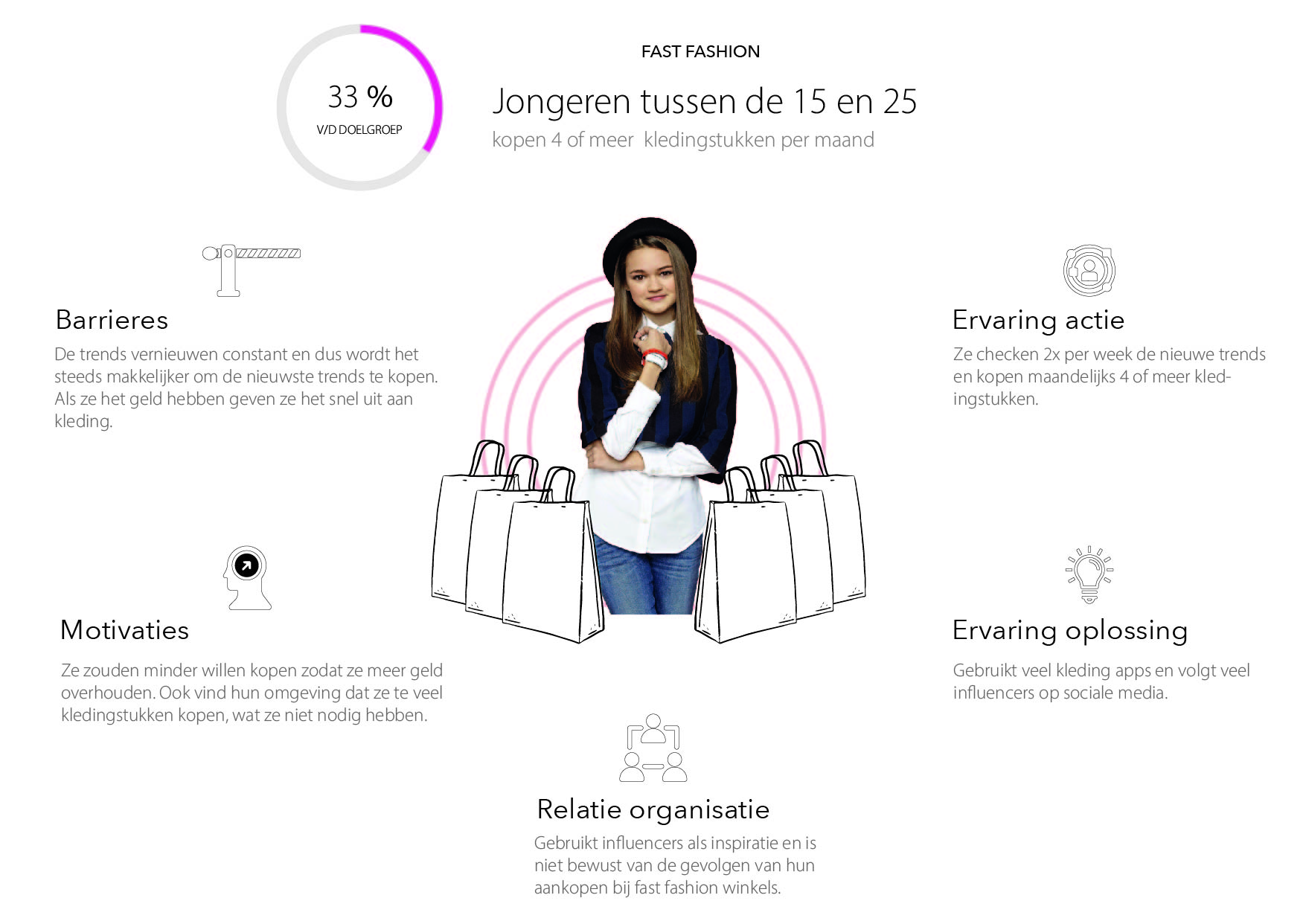
Behavior plan & customer journey
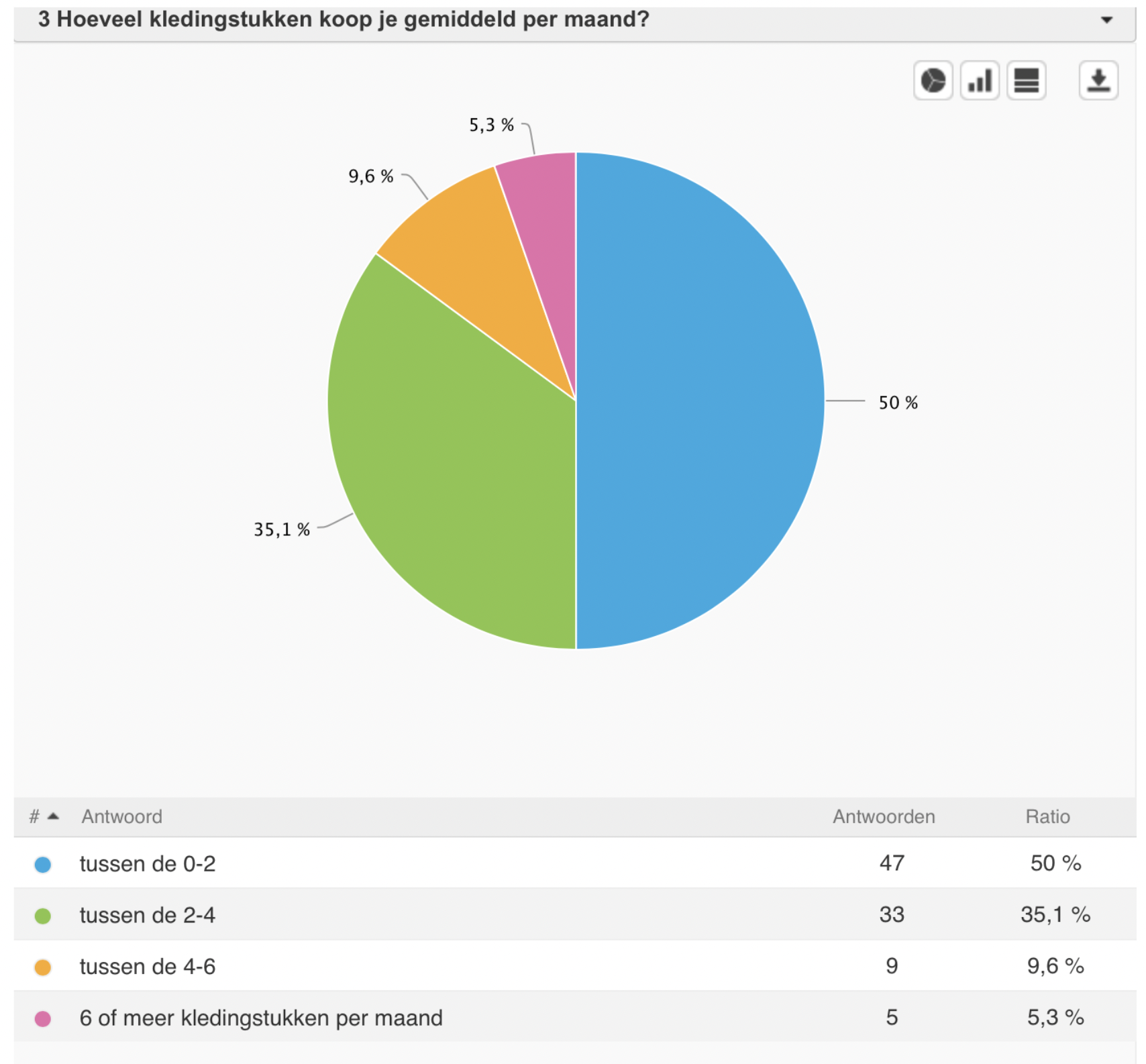
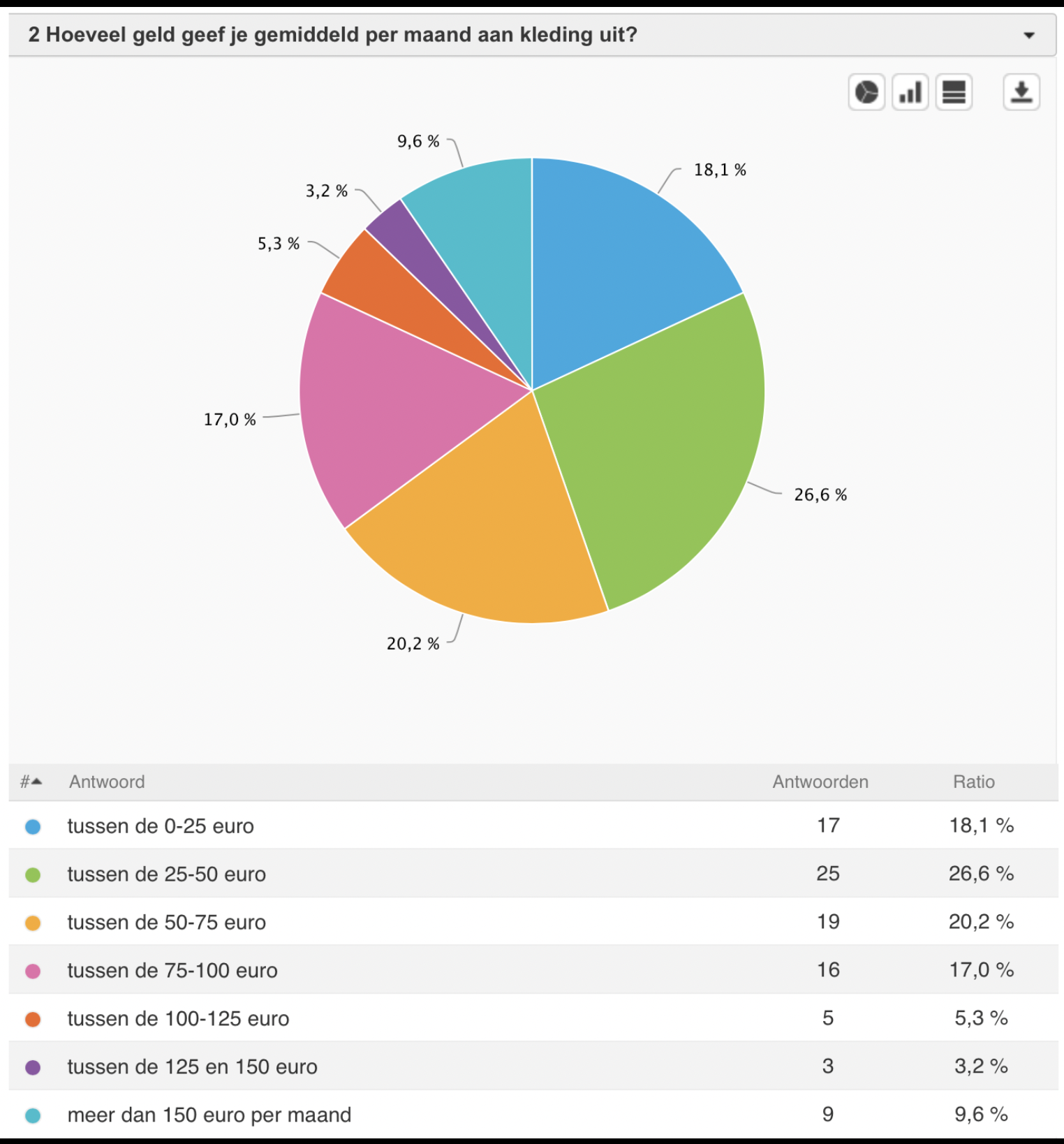
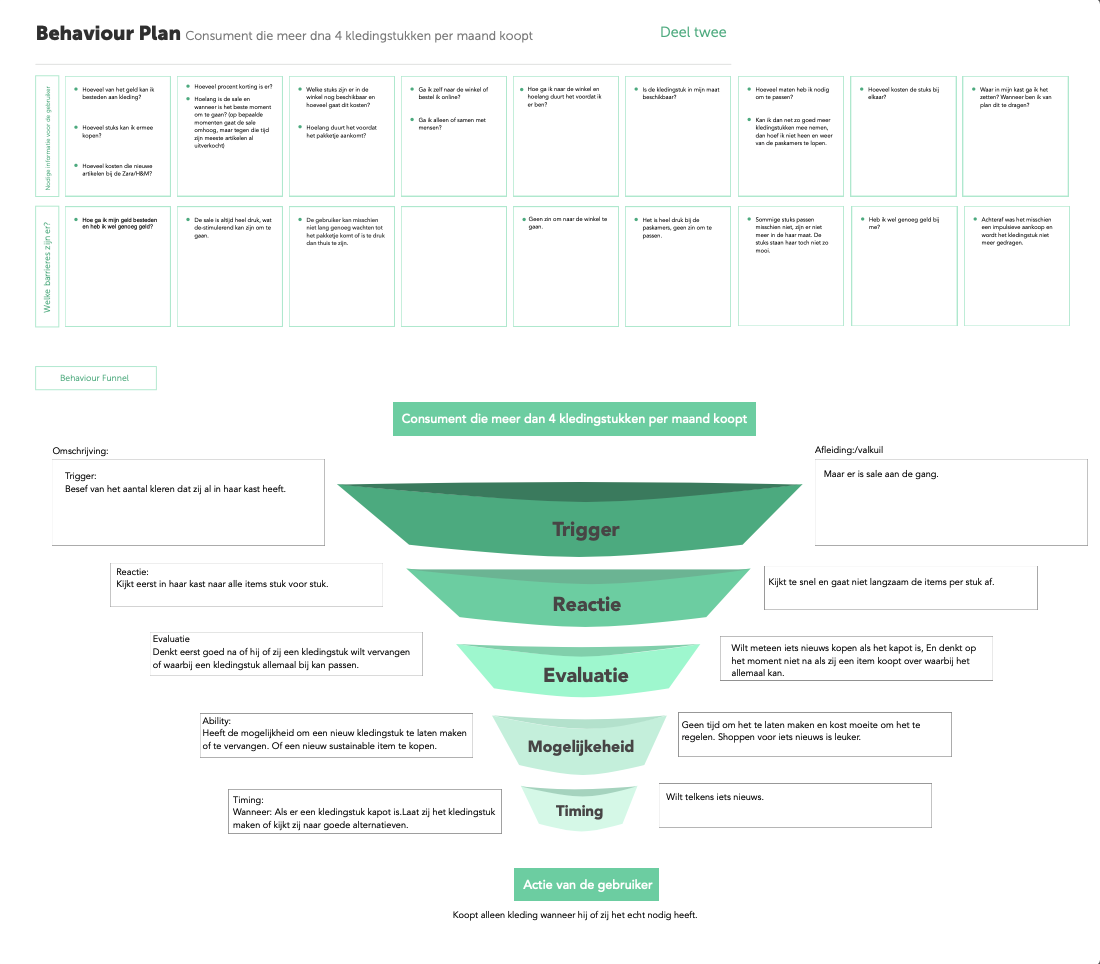
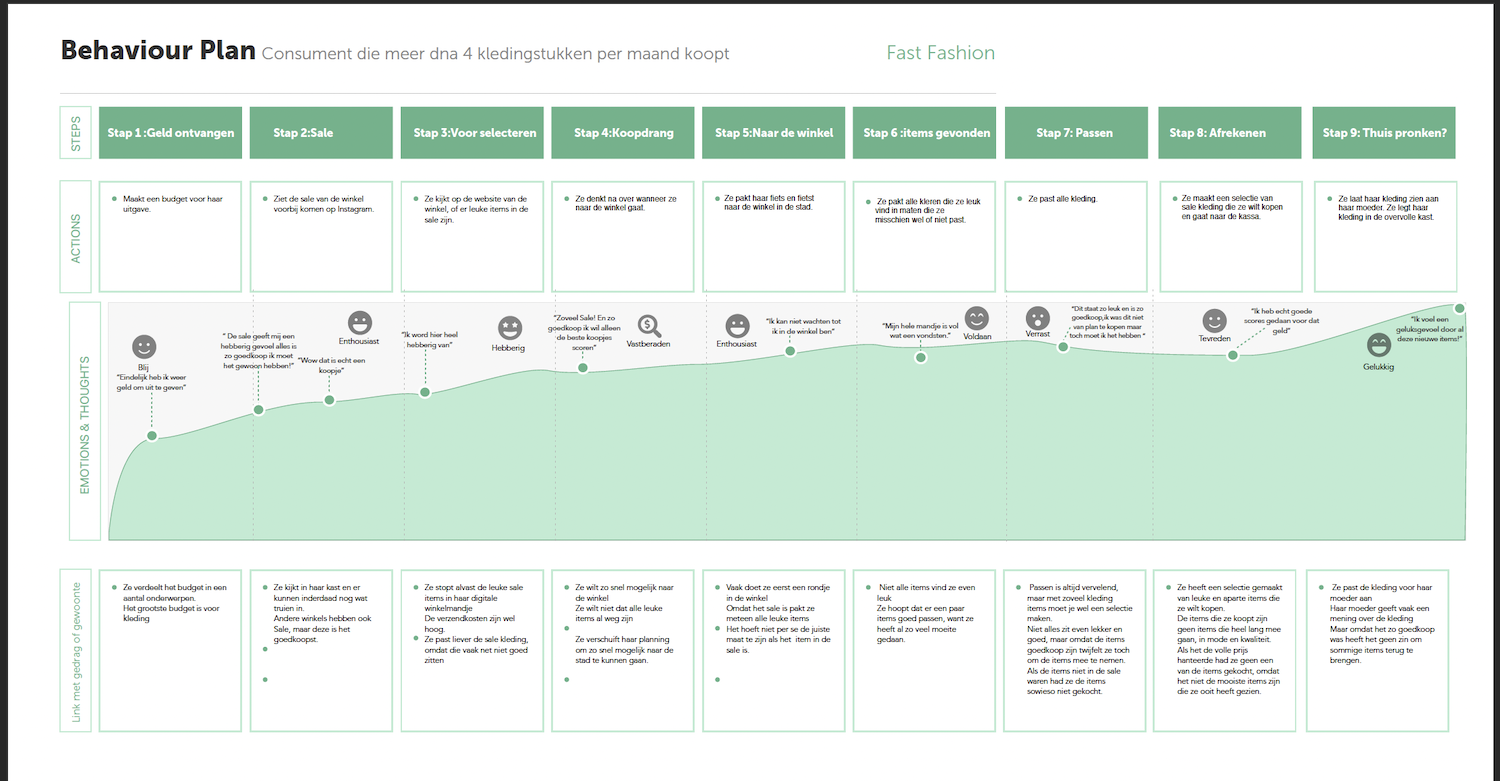
Key insights of the target audience
🙉 Ignorance A large portion is aware of the negative downside of fast fashion but still chooses to buy it.
👥 A 2nd Opinion Matters They often go shopping alone, leading to a lack of a second opinion on whether the clothing item looks good, resulting in quicker purchases.
🙅🏽♀️ No Easy Alternatives There is no interest in sustainable clothing. It requires too much effort, exertion, time, and money.
👕 Too Much Clothing Because they buy so much clothing, they no longer know what hangs in their wardrobe. Old clothing quickly becomes irrelevant to wear.
Research Conclusion
Based on the key insights above, I’ll use an app where all the clothing is digitalised, to help the audience make their old clothing relevant again, suggesting outfit combinations and encouraging second thoughts before new purchases. By raising awareness of their wardrobe, the app aims to decrease the urge for unnecessary new items.
✏️ 2. Design & Concept Phase
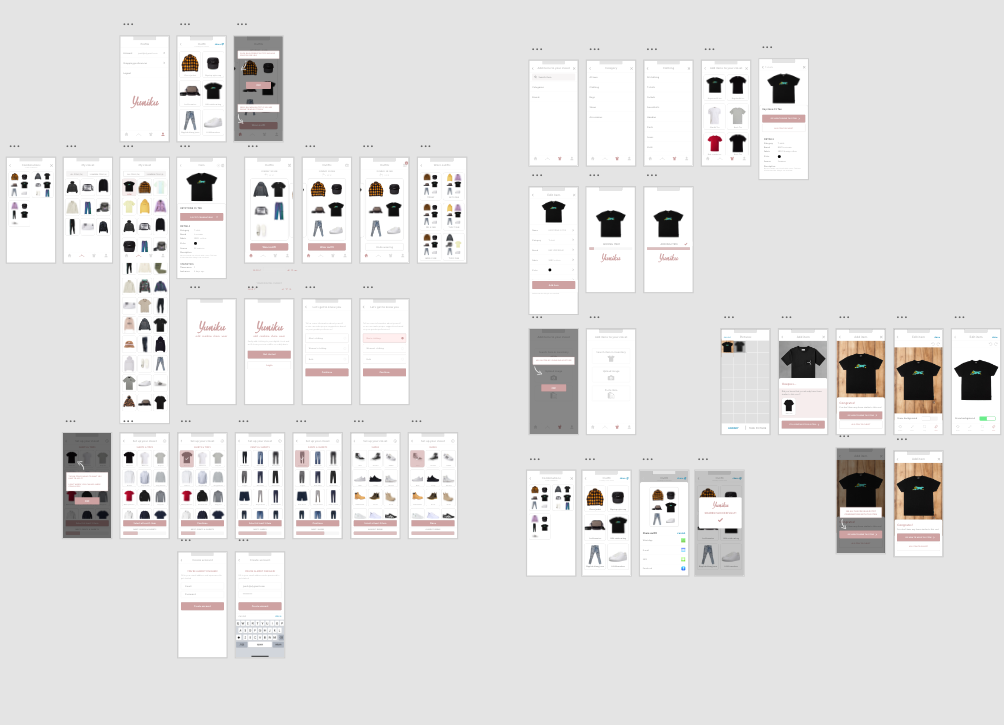
Lo-Fi
Upload a picture of a new item you want to buy before you buy it. The app will see if you already have similar items in your closet. If not, it will show all possible outfit combinations with that new item so that you can see if the item will match the rest of your closet. It will make you think twice before doing an impulsive purchase.
Hi-Fi
Easily add items buy making or uploading a picture of it, or just add it through searching it through the apps database.
The end result

